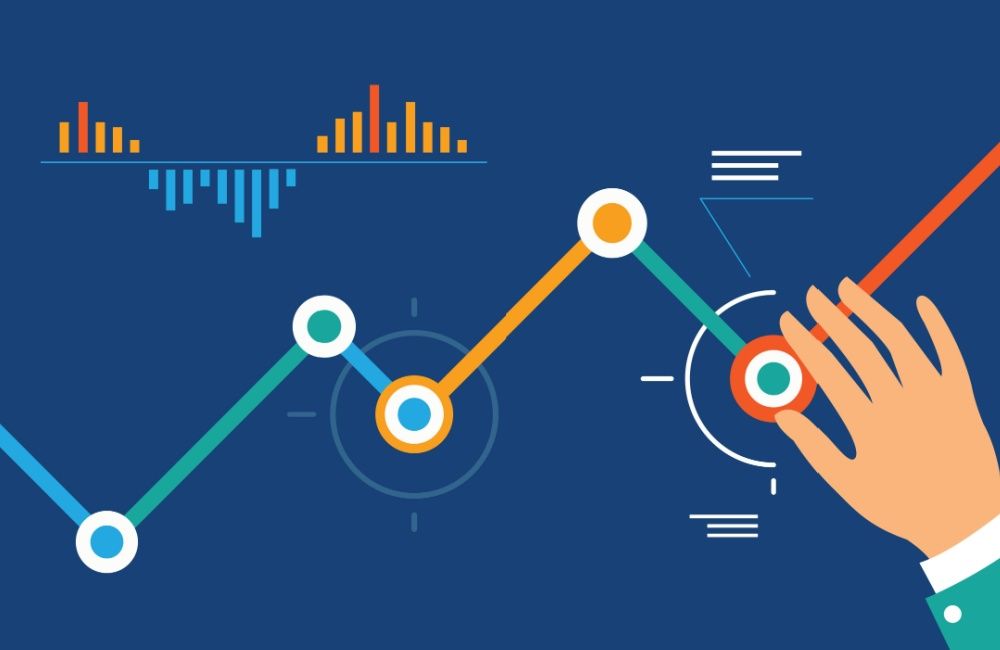
Watching your website rankings plummet feels like a punch to the gut. One day you are riding high on page one, and the next, you have vanished into the digital abyss. The panic is real, but this is the moment to get to work on how to recover SEO rankings and reclaim your spot.
That sudden drop in traffic and leads is alarming. You probably have a million questions racing through your mind. Did Google penalize my site? Was it a competitor? Did I do something wrong?
It is a frustrating situation, but a fixable one. Learning how to recover SEO rankings is a process, not an overnight miracle. With the right steps, you can get back on track.
First, Take a Deep Breath and Don’t Panic
The worst thing you can do right now is make rash changes. Hasty decisions made in a panic often make things worse. Instead of frantically changing title tags, overhauling your site design, or deleting pages, your first step is to be a detective.
Making changes without data is a recipe for disaster. You might delete content that only needed a small update or start a link-disavowing campaign that hurts your good links. A calm, data-driven approach is the only way forward.
You need to diagnose the problem accurately before you can apply a cure. Trying to fix something without knowing the cause is like throwing darts in the dark. You might get lucky, but you will probably waste a lot of time and effort.
Identify the Cause of the Ranking Drop
There are usually a few key culprits behind a sudden ranking loss. Our job is to investigate each one systematically. Think of it as a checklist to find the source of the problem before you begin any recovery efforts.
Check for Google Penalties
A Google penalty, or manual action, is when a human reviewer at Google decides your site violates their guidelines. These are serious, but they are also less common than other causes. The good news is that Google tells you directly if you have one.
To check, log in to your Google Search Console account. In the left-hand menu, look for “Security & Manual Actions” and click on “Manual actions.” If you see a message saying “No issues detected,” you can breathe a sigh of relief.
If there is an issue listed, Google will explain the problem and which pages are affected. Common manual actions include penalties for unnatural links pointing to your site or thin content with little value. This information is your starting point for recovery.
Investigate Recent Google Algorithm Updates
Most of the time, ranking drops are caused by Google’s regular algorithm updates, not manual actions. Google is always refining its search system to provide better results. It makes hundreds of changes each year.
Sometimes, a broad core update can shake up the rankings significantly. What worked yesterday might not work today. This is not a penalty; it is the algorithm re-evaluating your site based on new quality signals.
You can check if your traffic drop coincides with a known update. Many SEO industry news sites track Google’s algorithm history. If your drop lines up with a big update, you have a strong clue that you need to better align your website with what Google is now rewarding.
Rule Out Technical SEO Problems
Sometimes the problem is purely technical. A glitch in your website’s code or server configuration can stop Google from properly crawling and indexing your site. These issues can be sneaky but are often the easiest to fix.
Here’s a quick list of technical areas to check immediately:
- Crawl Errors: Check the “Coverage” report in Google Search Console. Look for a spike in errors that prevent Googlebot from accessing your pages. Pay close attention to server errors (5xx) or “not found” errors (404) on important pages.
- Robots.txt Issues: A tiny mistake in your robots.txt file can accidentally block Google from your entire site. Make sure you have not put a “Disallow: ” directive in place, as this tells search engines to ignore all of your content.
- Accidental ‘noindex’ Tags: A developer might accidentally leave a ‘noindex’ tag on a page or even the entire site after maintenance. This tag explicitly tells Google to remove the page from its index. Use the “URL Inspection” tool in Google Search Console to see if your key pages are indexed.
- Site Speed: A slow website creates a poor user experience and is a known ranking factor. Use Google’s PageSpeed Insights tool to see how your site performs on Core Web Vitals like LCP, INP, and CLS. A sudden slowdown from a new plugin or large image files could hurt your rankings.
- Mobile-Friendliness: With Google’s mobile-first indexing, your site must work perfectly on mobile devices. Use the Mobile-Friendly Test to find problems. Issues like text being too small or buttons being too close together can harm your mobile performance.
- SSL Certificate Problems: An expired SSL certificate will trigger security warnings in browsers, driving visitors away. This lack of security can also negatively impact your search rankings. Always confirm your HTTPS is set up correctly and your certificate is current.
- Issues from a Site Migration: If your ranking drop happened right after a website redesign or move to a new domain, this is likely the cause. Common problems include broken redirects (301s), changes in URL structure, or content that was lost during the transfer. A thorough post-migration audit is necessary to find and fix these errors.
Your Action Plan on How to Recover SEO Rankings
Once you have diagnosed the likely cause, you can start building your recovery plan. This is where you roll up your sleeves and begin the real work. The approach should be systematic and focus on long-term quality, not short-term tricks.
Addressing a Manual Penalty
If you were unlucky enough to get a manual action, your path is clear. Google has told you what the problem is. Most manual actions are related to unnatural links, spam, or thin content.
First, you need to fix the specific issue Google identified. If it’s about unnatural links pointing to your site, you will need to clean up your backlink profile. This means methodically auditing your links, reaching out to webmasters to ask for link removal, and using Google’s Disavow tool for toxic links you cannot get removed.
Once you have made a genuine effort to fix the problem, you must submit a “Reconsideration Request” through Google Search Console. In your request, explain exactly what you did to fix the issue. Be honest, be thorough, and document your cleanup efforts. A successful reconsideration will lift the penalty.
Recovering from an Algorithm Update
This is the most common scenario for a ranking drop. There is no reconsideration request for an algorithm update. Your only option is to improve your website’s overall quality and demonstrate to Google that you deserve to rank again.
Re-evaluate Your Content Quality
Algorithm updates, especially core updates, are all about content quality and relevance. Google wants to promote content that demonstrates experience, expertise, authoritativeness, and trustworthiness (E-E-A-T). You need to honestly assess your pages that lost ranking.
Ask yourself these questions about your content:
- Does your content fully answer the searcher’s question, or does it only scratch the surface?
- Is it written by a credible author with demonstrable experience on the subject?
- Is it comprehensive, well-researched, and supported by facts and data?
- Is the information accurate, up-to-date, and free of errors?
- Is your content genuinely more helpful than the pages now outranking you?
Improving pages that dropped may involve updating them with new information and fresh data. It could mean merging several weak articles on the same topic into one strong, comprehensive guide. Sometimes, it might even mean deleting old, low-quality content that offers no value to users or your business.
A content audit can be very helpful here. It gives you a complete inventory of your content and helps you decide what to improve, what to consolidate, and what to remove. It is a big job, but the results are worth the effort.
| Content Action | Description | Best For |
|---|---|---|
| Improve | Add more detail, new data, expert quotes, and helpful images or videos to make the content more useful. This often includes rewriting sections to be clearer. | Pages with high potential that have dropped slightly. |
| Consolidate | Combine multiple weak pages about the same topic into one strong page. Use 301 redirects from the old URLs to the new one. | Fixing “keyword cannibalization” issues or thin content. |
| Remove | Delete content that is outdated, irrelevant, or has no traffic and no links. This can improve your site’s overall perceived quality. | Improving overall site quality and crawl budget. |
Strengthen Your E-E-A-T Signals
Experience, Expertise, Authoritativeness, and Trustworthiness are concepts Google uses to measure page quality. To improve, you need to show off why people should trust you. This involves making your credibility obvious to both users and search engines.
Simple ways to build trust include adding clear author bios with credentials and links to their social profiles. You can also showcase awards, certifications, or positive customer testimonials. Citing reputable sources in your articles and having a clear “About Us” and “Contact” page are also important trust signals.
This is especially critical for websites in the Your Money or Your Life (YMYL) space. Topics like health, finance, and legal advice face a higher level of inspection from Google. Your content must be correct, trustworthy, and written by qualified experts.
Audit and Improve Your Backlinks
Even without a manual penalty, a low-quality backlink profile can hold you back after an algorithm update. Google is getting better at just ignoring bad links. But a proactive cleanup can still make a positive difference.
Use Google Search Console and third-party backlink analysis tools to get a complete list of sites linking to you. Review the list and identify any links from spammy, low-quality, or irrelevant websites. These are the links that could be hurting your authority.
The first step is to contact the webmasters of the toxic sites and request that they remove the link. If they do not respond or refuse, you can use Google’s Disavow tool. Use this tool with caution, as disavowing the wrong links can harm your SEO. Focus your long-term efforts on earning high-quality links from respected sites in your industry, as these are a powerful vote of confidence.
Facing a drop in your search engine traffic can be stressful for any business owner. It directly impacts your leads and your bottom line. But remember, rankings are not set in stone.
The process for how to recover SEO rankings is about methodical diagnosis and a dedicated focus on quality. Do not look for shortcuts or quick fixes. Focus on fixing underlying technical issues, elevating your content, and building a site that genuinely helps your users.
Recovery will take time and consistent effort, but the outcome is a stronger, more resilient website. A high-quality site is the best defense against future algorithm changes. This is how you build a business that lasts.












